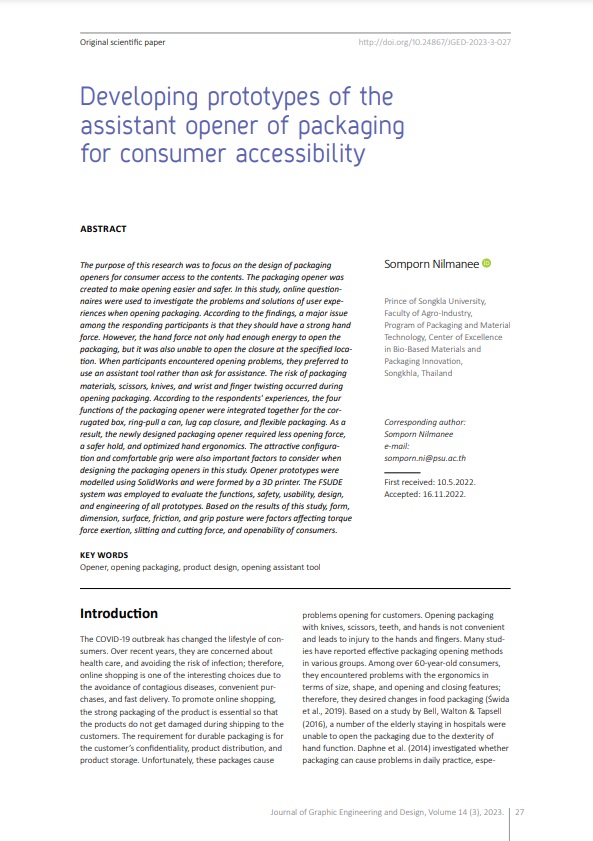Developing prototypes of the assistant opener of packaging for consumer accessibility

Published 2023-09-01
abstract views: 164 // Full text article (PDF): 148
Keywords
- Opener,
- opening packaging,
- product design,
- opening assistant tool
How to Cite
Copyright (c) 2023 © 2023 Authors. Published by the University of Novi Sad, Faculty of Technical Sciences, Department of Graphic Engineering and Design. This article is an open access article distributed under the terms and conditions of the Creative Commons Attribution license 3.0 Serbia.

This work is licensed under a Creative Commons Attribution 3.0 Unported License.
Abstract
The purpose of this research was to focus on the design of packaging openers for consumer access to the contents. The packaging opener was created to make opening easier and safer. In this study, online questionnaires were used to investigate the problems and solutions of user experiences when opening packaging. According to the findings, a major issue among the responding participants is that they should have a strong hand force. However, the hand force not only had enough energy to open the packaging, but it was also unable to open the closure at the specified location. When participants encountered opening problems, they preferred to use an assistant tool rather than ask for assistance. The risk of packaging materials, scissors, knives, and wrist and finger twisting occurred during opening packaging. According to the respondents' experiences, the four functions of the packaging opener were integrated together for the corrugated box, ring-pull a can, lug cap closure, and flexible packaging. As a result, the newly designed packaging opener required less opening force, a safer hold, and optimized hand ergonomics. The attractive configuration and comfortable grip were also important factors to consider when designing the packaging openers in this study. Opener prototypes were modelled using SolidWorks and were formed by a 3D printer. The FSUDE system was employed to evaluate the functions, safety, usability, design, and engineering of all prototypes. Based on the results of this study, form, dimension, surface, friction, and grip posture were factors affecting torque force exertion, slitting and cutting force, and openability of consumers.
Article history: Received (May 10, 2022); Revised (October 19, 2022); Accepted (November 16, 2022); Published online (September 1, 2023)

